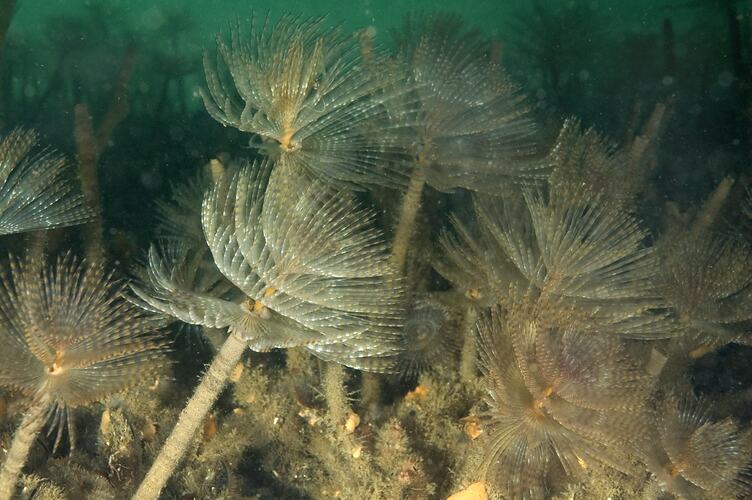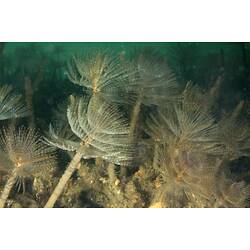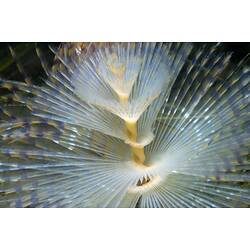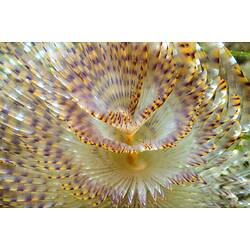General Description
Body hidden within a brown-grey, soft tube. Feeding tentacles at the opening of the tube are joined to the head in an elongate spiral. No flap (operculum) protects the opening. Often in groups. Often found in groups. Distinguished from the similar native species Sabellastarte ausraliensis by the feeding tentacles arranged in a spiral rather than a tuft, and abdominal bristles arranged in a spiral rather than a simple C-shape. Tube up to 20 cm long.
Biology
European Fan Worms form dense colonies and feed by filtering particles out of the water with their tentacles. They attach to reef and artificial structures, including aquaculture farms. This large fan worm is very common in several harbours in southern Australia where it has been accidentally introduced from the Mediterranean Sea through shipping activity.
Distribution
Europe, New Zealand and Southern Australia.
Habitat
Reef and seagrass areas in harbours and bays, to depth of 30 m.
More Information
-
Animal Type
-
Animal SubType
-
Brief Id
Worm with colourful feeding tentacles in a spiral protruding from a tube often in large groups.
-
Colours
Brown, Grey, White, Orange
-
Maximum Size
20 cm
-
Habitats
-
Diet
Plankton or Particles
-
Endemicity
-
Commercial
No
-
Conservation Statuses
CITES: Not listed, FFG Threatened List: Not listed, EPBC Act 1999: Not listed, IUCN Red List: Not listed
-
Depths
Shallow (1-30 m)
-
Water Column Locations
On or near seafloor
-
Taxon Name
-
Scientific Author
(Gmelin, 1791)
-
Common Name
European Fan Worm
-
Other Names
Magnificent Banded Fan Worm
-
Phylum
-
Class
-
Order
-
Family
-
Genus
-
Species Name
spallanzanii





